Home
Leipzig (Universitätskinderklinik Leipzig)

The Kinderfachabteilung at the University Children's Clinic in Leipzig was
established in 1941 as the second of (what today is the state of) Saxony's
three "special children's wards." It continued to operate at the Children's
Clinic until the Clinic was bombed in December 1943 (the
Kinderfachabteilung was housed in a wooden barrack and burned down
completely). Thereafter, the special children's ward may not have closed but
continued in a decentralized manner in Klinga and Westewitz/Hochweitzschen
(see Buhl, p. 43; Topp 2005, p. 36 n. 175). Its medical director was Dr.
Werner Catel (who became a professor of pediatrics in Kiel after WWII until
he was forced to retire in 1960; he died in 1981), and responsible for
the special children's ward were Dr. Hanna(h) Uflacker (who after WWII
worked at the Justus-Liebig University in Giessen and became the author of a
well-known pediatric book on child care; in 1962 the state attorney's office
in Hanover investigated her [as well as Hans Heinze, Ernst Wentzler, and
Werner Catel], but the case was discharged at the end of 1964; Benzenhöfer
2003b, p. 16 n. 16), Dr. Ernst Klemm (who became head physician at the
children's hospital in Zeven near Bremen; see Klee 2001, p. 107), Dr. Hans
Christoph Hempel (who continued to work at the University Children's Clinic
until becoming medical director of a hospital in Karl-Marx-Stadt and head
physician of the children's clinic there; see Leide, p. 332-6), and Dr.
Hans-Joachim Hartenstein, who was a pediatric physician in Berlin (Klee
2001, p. 107).
Leipzig also has a special significance due to the fact the the first child,
"K.," whose disability and death gave rise to the Reichsausschussverfahren,
was killed in Leipziger University Children Clinic, and that Leipzig was the
place where Binding and Hoche's book, Allowing
the Destruction of Life Unworthy of Living (here), was published there in 1920.
Source: Eene Meene Muh
The location of the Kinderfachabteilung was in Station 9/10, a wooden
barrack, which was destroyed in the bombing in 1943.
The number of children killed is not known. However, in his master's thesis
Sascha Topp (p. 80) has provided the following assessment: "According to the
correspondence between Catel and von Hegener on the subject of the
compensation between 5 to 8 people were involved in the proceedings [of the
"children's ward"] during the war years. An involvement of medical personnel
of this magnitude outside of Leipzig can be found only in Brandenburg-Görden,
Leipzig-Dösen, Eglfing-Haar, and Vienna 'Am Spiegelgrund,' so that one can
assume, under consideration of a four-year period of activity of the ward,
that several hundred children and youths fell victim to this operation."
After a series of articles in the magazine Der
Spiegel in 1960 alluded to Dr. Catel's involvement in "children's
euthanasia" (see 1, 2),
Eastern
German newspapers published reports on the lenient treatment of Nazi murders
in the West. As a result, the Stasi received reports that personnel at the
University Children's Clinic engaged in discussions about children's
euthanasia and the involvement of Dr. Catel and one of his assistants, Dr.
Hempel, who still worked there. While investigations by the Stasi found some
material suggestive of the involvement of Dr. Hempel, further investigations
were quashed in 1961 in fear of Dr. Hempel's flight from East Germany and
West German prosecutors being unlikely to prosecute him there (see Leide,
pp. 332-6).
This status of suspended knowledge about children's euthanasia continued
until the mid-to-late 1990s, when an exhibition was created at the clinic in
Leipzig-Dösen
(the other Kinderfachabteilung in the area) and the physician Christiane
Roick published her medical dissertation on the medical crimes there during
National Socialism, which in passing also referred to the special children's
ward in Leipzig. The current municipal coordinator of psychiatric services
in Leipzig, Thomas Seyde, advocated for a public commemoration of the
victims of "euthanasia" crimes in Leipzig. In 1998 a number of urns were
found at the municipal Ostfriedhof with the remants of 35 T4 victims who had
been patients at Leipzig-Dösen. Christoph Buhl, who had done an internship
with Th. Seyde, then conducted a study (his master's thesis) on the history
of eugenics and "euthanasia" in Leipzig in 2001, which included a report on
Th. Seyde's findings concerning the locations of victims' graves, including
those of child victims, in a variety of municipal cemeteries. In 2000 the
city council passed a resolution to establish a memorial book with the names
of all victims of the tyranny of National Socialism (here), followed by a resolution on 13 December 2006
supportive of a commemoration of the victims, further research, and
providing information to the public (see here).
Students and teachers in area schools created an extensive exhibition on
the subject: "505: Children's Euthanasia-Crimes in Leipzig" (505. Kindereuthanasie–Verbrechen in Leipzig; see
exhibitions, and here) with the support of the municipal offices of
health and youth, and the town also provides a detailed guide for students
and teachers (here).
Source: Google Earth; author.
In 2008 the city council decided to support the establishment of a memorial
for child and adult victims of euthanasia (here), located in the Ostfriedhof, where at least 70
adult and child "euthanasia" victims from Leipzig were buried. The memorial
was established in a section of the cemetery where 35 victims and one child
victim are known to lie buried. It has a traditional style of graves of the
1940s. The inscription on the left reads "In lasting memory to the victims
of children's euthanasia of Leipzig who rest in the surrounding burial
grounds." The inscription on the right reads "In lasting memory to the
victims of euthanasia of Leipzig who rest in the surrounding burial
grounds." Below the inscriptions are the names and dates of birth and death
of 35 victims. Every year from now on a wreath will be placed there on May
8. Since none of the child victims of the children's ward at the University
Children's Clinic are known by name, these are names of victims of the
special children's ward in Leipzig-Dösen. Prayers
for the victims of euthanasia are also part of the "prayer for peace" at the
Leipzig Church of St. Nicolas (Nikolaikirche). In 2009, its program was
created by the association of the disabled (Behindertenverband Leipzig e.V.)
on occasion of the 70th anniversary of Hitler's "euthanasia" decree.
Th. Seyde's office issued press releases asking relatives of victims to come
forward (see here).
 Source: Author.
Source: Author.
For 2010, the city council decided to establish a central memorial for the
victims of "children's euthanasia" in the former Neuer Johannisfriedhof
cemetery, now a public park named Friedenspark. It is located in the
vicinity of the former location of the University Children's Clinic and
believed to contain at least 100 graves of child victims. Further
information can be found here and here. It was dedicated on 6 May 2011.
Source: Author
The twisted path along a series of bushes and grasses symbolizes the fear
and the hopeless of the children. An inscribed text at the entrance reads:
"This is the meadow quaking grass, and this the path farewell." It is based
on a verse in a poem of the poet Christine Lavante. Another inscription
reads: "In memory of Sigrid Olympia S. (born 8 Nov. 1939; died 24 May 1941)
buried here on the then Neuer Johannisfriedhof and the more than 500 other
children who fell victim to the children's euthanasia crimes in Leipzig
between 1939 and 1945."
The website of the clinic (which was reconstructed on the premises) mentions
vaguely that under director Dr. Catel "fascism's destructive
ideology did not pass by the Clinic" (here), and no further information was originally
provided one of its other history pages. More recently, there are express
references to the activities of Dr. Catel and "euthanasia (here).
The Council on Disability of the City of Leipzig (Behindertenbeirat) has
considered suggesting that a memorial plaque be established in memory of the
beginning of "children's euthanasia" in Leipzig at the university (see Lahm
et. al, p. 147). A memorial created by Matthias Klemm is expected to be
placed in the Room of Silence in the Neue Augusteum.
A city memorial book for citizens in Leipzig who fell victim to the Nazi
rule (Gedenk- und Totenbuch der Leipziger Opfer der nationalsozialistischen
Gewaltherrschaft von 1933 bis 1945) was made available online on 27 January
2010 (here).
It contains the names of child victims at Leipzig-Dösen but not of Leipzig's
university children's clinic.
MDR TV has a program entitled "Die vergessenen Kinder von Leipzig" (The
forgotten children of Leipzig) on this subject shown in August 2013 (https://www.youtube.com/watch?v=9cT_rOZt7sw).
It includes statements made by a former nurse at the facility who refers to
the minors in her care as "material" and incapable of being educated -
echoing terminology used in the Nazi period. She denies having known about
the murders and having had to follow physicians' orders. In 2014, the film
"Der Blinde Fleck" (Blind Spot) addressed the topic further, with a focus on
Dr. Catel and the careers of several of his students at the university
pediatric clinic, particularly Dr. Erich Hässler and Dr. Hans-Christoph
Hempel.
The humanities scholar Ulrich Rottleb plans on writing his dissertation on
the topic "Children's Euthanasia in Saxony" at Berlin's Humboldt University.
Literature
Benzenhöfer, Udo. 2003a. "Genese und Struktur der
'NS-Kinder- und Jugendlicheneuthanasie.'" Monatsschrift
für Kinderheilkunde 151: 1012-1019.
———. 2003b. "Hans Heinze: Kinder und Jugendpsychiatrie und 'Euthanasie.'"
Pp. 9-52 in Beiträge zur
NS-"Euthanasie"-Forschung 2002, edited by the Arbeitskreis zur Erforschung
der nationalsozialistischen "Euthanasie" und Zwangssterilisation. Münster: Klemm und Oehlschläger.
Buhl, Christoph. 2001. "Von der Eugenik zur Euthanasie: Eine Spurensuche in
Leipzig." Master's Thesis, Fachbereich Sozialwesen der Hochschule für
Technik, Wirtschaft und Kultur Leipzig. Here.
"Eene meene muh - und raus bist du: Kindereuthanasie in Leibzig: Eine
Erinnerung: Schüler auf der Suche nach verblassten Spuren." Available at http://www.leipzig.de/imperia/md/content/51_jugendamt/fachstelle/kindereuthanasie_in_leipzig.pdf.
Kaelber, Lutz. 2010. "Virtual Traumascapes: The Commemoration of Nazi
‘Children’s Euthanasia’ Online and On Site." Digital
Icons: Studies in Russian, Eurasian, and Central European New Media
4: 13-44. Here.
Klee, Ernst. 2001. Deutsche Medizin im
Dritten Reich: Karrieren vor und nach 1945. 2d ed. Frankfurt:
Fischer.
Lahm, Berit, Thomas Seyde, and Eberhard Ulm, eds. 2008. 505:
Kindereuthanasieverbrechen in Leipzig. Leipzig: Plöttner Verlag.
Leide, Henry. 2007. NS-Verbrecher und
Staatssicherheit: Die geheime Vergangenheitspolitik der DDR. 3d
edition. Göttingen: Vandenhoeck und Ruprecht.
Roick, Christiane. 1997. "Heilen, Verwahren, Vernichten: Die Geschichte der
Sächsischen Landesanstalt Leipzig-Dösen im Dritten Reich." M.D. Diss.,
Medical College University of Leipzig.
Stadt Leipzig, Dezernat für Schule, Jugend, Soziales und Gesundheit. 2007.
"Euthanasieverbrechen in der Zeit des Nationalsozialismus in Leipzig."
Available at http://www.leipzig.de/imperia/md/content/53_gesundheitsamt/ozialpsychiatrischerdienst/euthanasieverbrechen_schulinfo-neu.pdf.
Topp, Sascha. 2004. “Der ‘Reichsausschuss zur wissenschaftlichen Erfassung
erb- und anlagebedingter schwerer Leiden’: Zur Organisation der Ermordung
minderjähriger Kranker im Nationalsozialismus 1939-1945.” Pp. 17-54 in Kinder
in der NS-Psychiatrie, edited by Thomas Beddies and Kristina Hübener.
Berlin-Brandenburg: Be.bra Wissenschaft.
———. 2005. "Der 'Reichsausschuß zur wissenschaftlichen
Erfassung erb- und anlagebedingter schwerer Leiden': Die Ermordung
minderjähriger Kranker im Nationalsozialismus 1939-1945." Master's Thesis
in History, University of Berlin.
Last updated 13 March 2015
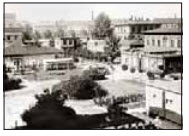
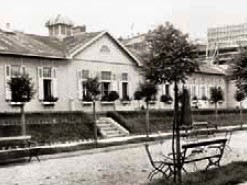
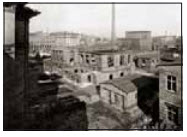





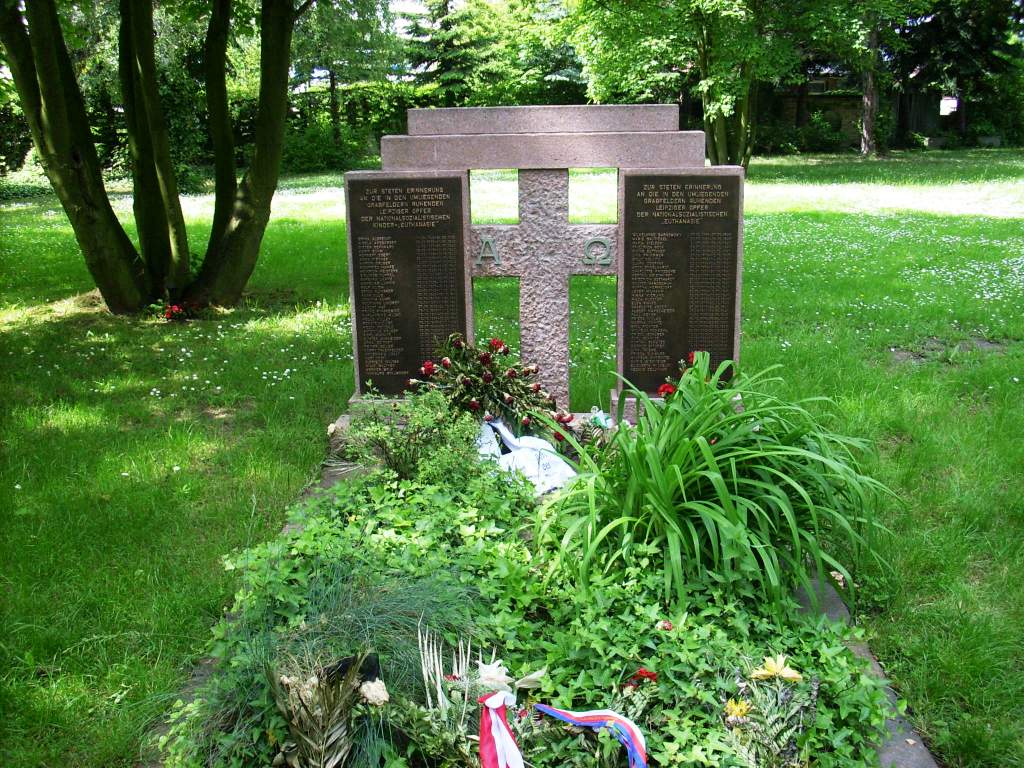
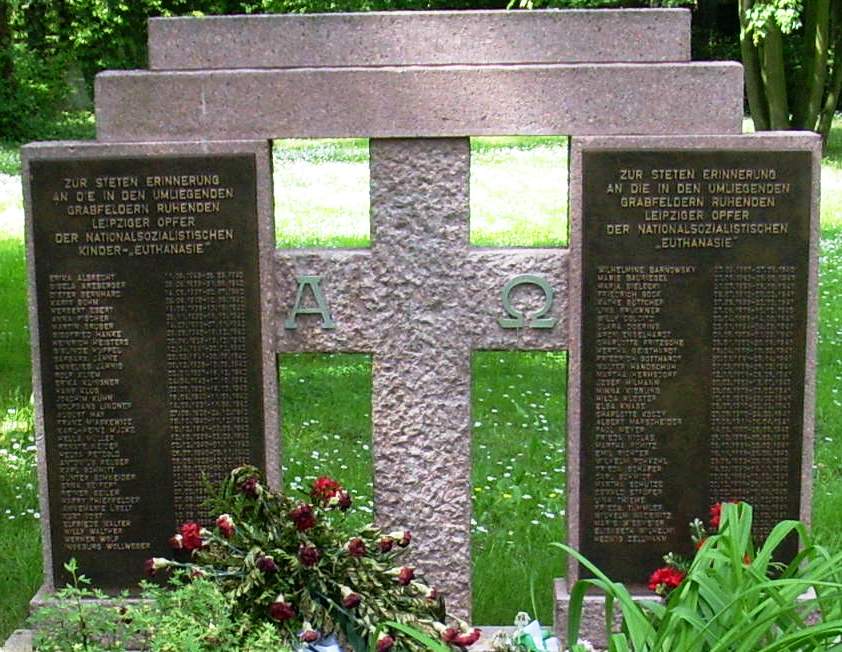
 Source: Author.
Source: Author.
